Submitted:
16 September 2023
Posted:
19 September 2023
You are already at the latest version
Abstract
Keywords:
1. Introduction
2. Related Works
3. Methodology
3.1. Model architecture
- First, the ENN receives an image and performs augmentation, including input size adjustment and normalization.
- The ENN outputs a distributed weighted output through a distributed backbone neural network.
- The ENN concatenates the distributed weighted outputs of the individual sub-neural networks and converts them into weighted inputs tensor to be passed to the master layer.
- With weighted input tensor as input, the ENN computes the order similarity coefficient for each backbone model
- The ENN multiplies the weighted input tensor and the similarity coefficient tensor to output the final closeness of an input image to every design right.
3.1.1. The distributed backbone model
3.1.2. The Ensemble DNN model
4. Experiments
4.1. Experiment setup and implementation
- UP-DETR [15] with CUDA (v10.2) Python (v3.7.7), PyTorch (v1.6.0), and Torchvision (v0.7.0)
- ResNet [12] with CUDA (v10.2) Python (v3.7.7), PyTorch (v1.6.0), and Torchvision (v0.7.0)
- WideResNet [26] with CUDA (v10.2) Python (v3.7.7), PyTorch (v1.6.0), and Torchvision (v0.7.0)
- Yolo [13] with CUDA (v10.2) Python (v3.7.7), PyTorch (v1.6.0), and Torchvision (v0.7.0)
- EfficientNet [27] with CUDA (v10.2) Python (v3.7.7), PyTorch (v1.10.0), and Torchvision (v0.11.0)
4.2. Data collection and augmentation
4.3. Comparison of training speed
4.4. Comparison of distributed backbone models
4.5. Hyper-parameter tuning
4.6. Comparison with a single network model
5. Conclusion
Author Contributions
Funding
Abbreviations
| ENN | Ensemble Neural Network |
| DNN | Deep Neural Network |
References
- de coopération et de développement économiques, O. Trade in counterfeit and pirated goods: Mapping the economic impact; OECD Publishing, 2016.
- Vaswani, A.; Shazeer, N.; Parmar, N.; Uszkoreit, J.; Jones, L.; Gomez, A.N.; Kaiser. Ł.; Polosukhin, I. Attention is all you need. Advances in neural information processing systems 2017, 30. [Google Scholar]
- Kang, M.; Lee, W.; Hwang, K.; Yoon, Y. Vision transformer for detecting critical situations and extracting functional scenario for automated vehicle safety assessment. Sustainability 2022, 14, 9680. [Google Scholar] [CrossRef]
- Hwang, H.; Oh, J.; Lee, K.H.; Cha, J.H.; Choi, E.; Yoon, Y.; Hwang, J.H. Synergistic approach to quantifying information on a crack-based network in loess/water material composites using deep learning and network science. Computational Materials Science 2019, 166, 240–250. [Google Scholar] [CrossRef]
- Hwang, H.; Choi, S.M.; Oh, J.; Bae, S.M.; Lee, J.H.; Ahn, J.P.; Lee, J.O.; An, K.S.; Yoon, Y.; Hwang, J.H. Integrated application of semantic segmentation-assisted deep learning to quantitative multi-phased microstructural analysis in composite materials: Case study of cathode composite materials of solid oxide fuel cells. Journal of Power Sources 2020, 471, 228458. [Google Scholar] [CrossRef]
- Kumar, S.N.; Singal, G.; Sirikonda, S.; Nethravathi, R. A novel approach for detection of counterfeit Indian currency notes using deep convolutional neural network. IOP Conference Series: Materials Science and Engineering. IOP Publishing, 2020, Vol. 981, p. 022018.
- Lee, S.H.; Lee, H.Y. Counterfeit bill detection algorithm using deep learning. Int. J. Appl. Eng. Res 2018, 13, 304–310. [Google Scholar]
- Daoud, E.; Vu, D.; Nguyen, H.; Gaedke, M. ENHANCING FAKE PRODUCT DETECTION USING DEEP LEARNING OBJECT DETECTION MODELS. IADIS International Journal on Computer Science & Information Systems 2020, 15. [Google Scholar]
- Hawkins, J. A thousand brains: A new theory of intelligence; Hachette UK, 2021.
- Mountcastle, V.B. Modality and topographic properties of single neurons of cat’s somatic sensory cortex. Journal of neurophysiology 1957, 20, 408–434. [Google Scholar] [CrossRef] [PubMed]
- Wimmer, H.; Yoon, V.Y. Counterfeit product detection: Bridging the gap between design science and behavioral science in information systems research. Decision Support Systems 2017, 104, 1–12. [Google Scholar] [CrossRef]
- He, K.; Zhang, X.; Ren, S.; Sun, J. Deep residual learning for image recognition. Proceedings of the IEEE conference on computer vision and pattern recognition, 2016, pp. 770–778.
- Bochkovskiy, A.; Wang, C.Y.; Liao, H.Y.M. Yolov4: Optimal speed and accuracy of object detection. arXiv preprint arXiv:2004.10934 2020. arXiv:2004.10934 2020.
- Carion, N.; Massa, F.; Synnaeve, G.; Usunier, N.; Kirillov, A.; Zagoruyko, S. End-to-end object detection with transformers. European conference on computer vision. Springer, 2020, pp. 213–229.
- Dai, Z.; Cai, B.; Lin, Y.; Chen, J. Up-detr: Unsupervised pre-training for object detection with transformers. Proceedings of the IEEE/CVF Conference on Computer Vision and Pattern Recognition, 2021, pp. 1601–1610.
- Torrey, L.; Shavlik, J. Transfer learning. In Handbook of research on machine learning applications and trends: algorithms, methods, and techniques; IGI global, 2010; pp. 242–264.
- Yousefnezhad, M.; Hamidzadeh, J.; Aliannejadi, M. Ensemble classification for intrusion detection via feature extraction based on deep Learning. Soft Computing 2021, 25, 12667–12683. [Google Scholar] [CrossRef]
- Ahn, H.; Son, S.; Kim, H.; Lee, S.; Chung, Y.; Park, D. EnsemblePigDet: Ensemble Deep Learning for Accurate Pig Detection. Applied Sciences 2021, 11, 5577. [Google Scholar] [CrossRef]
- Usman, S.M.; Khalid, S.; Bashir, S. A deep learning based ensemble learning method for epileptic seizure prediction. Computers in Biology and Medicine 2021, 136, 104710. [Google Scholar]
- Parhami, B. Voting algorithms. IEEE transactions on reliability 1994, 43, 617–629. [Google Scholar] [CrossRef]
- Breiman, L. Bagging predictors. Machine learning 1996, 24, 123–140. [Google Scholar] [CrossRef]
- Freund, Y.; Schapire, R.E.; others. Experiments with a new boosting algorithm. icml. Citeseer, 1996, Vol. 96, pp. 148–156.
- Divina, F.; Gilson, A.; Goméz-Vela, F.; García Torres, M.; Torres, J.F. Stacking ensemble learning for short-term electricity consumption forecasting. Energies 2018, 11, 949. [Google Scholar] [CrossRef]
- Sikora, R.; others. A modified stacking ensemble machine learning algorithm using genetic algorithms. In Handbook of research on organizational transformations through big data analytics; IGi Global, 2015; pp. 43–53.
- Dou, J.; Yunus, A.P.; Bui, D.T.; Merghadi, A.; Sahana, M.; Zhu, Z.; Chen, C.W.; Han, Z.; Pham, B.T. Improved landslide assessment using support vector machine with bagging, boosting, and stacking ensemble machine learning framework in a mountainous watershed, Japan. Landslides 2020, 17, 641–658. [Google Scholar] [CrossRef]
- Zagoruyko, S.; Komodakis, N. Wide residual networks. arXiv preprint arXiv:1605.07146 2016.
- Tan, M.; Le, Q. Efficientnet: Rethinking model scaling for convolutional neural networks. International conference on machine learning. PMLR, 2019, pp. 6105–6114.
- Van Dyk, D.A.; Meng, X.L. The art of data augmentation. Journal of Computational and Graphical Statistics 2001, 10, 1–50. [Google Scholar] [CrossRef]
- Shorten, C.; Khoshgoftaar, T.M. A survey on image data augmentation for deep learning. Journal of big data 2019, 6, 1–48. [Google Scholar] [CrossRef]
- Zhong, Z.; Zheng, L.; Kang, G.; Li, S.; Yang, Y. Random erasing data augmentation. Proceedings of the AAAI conference on artificial intelligence, 2020, Vol. 34, pp. 13001–13008.
- Liu, Z.; Lin, Y.; Cao, Y.; Hu, H.; Wei, Y.; Zhang, Z.; Lin, S.; Guo, B. Swin transformer: Hierarchical vision transformer using shifted windows. Proceedings of the IEEE/CVF International Conference on Computer Vision, 2021, pp. 10012–10022.
- Konar, J.; Khandelwal, P.; Tripathi, R. Comparison of various learning rate scheduling techniques on convolutional neural network. 2020 IEEE International Students’ Conference on Electrical, Electronics and Computer Science (SCEECS). IEEE, 2020, pp. 1–5.
- Tieleman, T.; Hinton, G. Lecture 6.5-rmsprop, coursera: Neural networks for machine learning. University of Toronto, Technical Report 2012, 6. [Google Scholar]
- Cherry, J.M.; Adler, C.; Ball, C.; Chervitz, S.A.; Dwight, S.S.; Hester, E.T.; Jia, Y.; Juvik, G.; Roe, T.; Schroeder, M.; others. SGD: Saccharomyces genome database. Nucleic acids research 1998, 26, 73–79. [Google Scholar] [CrossRef] [PubMed]
- Kingma, D.P.; Ba, J. Adam: A method for stochastic optimization. arXiv preprint arXiv:1412.6980 2014.
- Loshchilov, I.; Hutter, F. Decoupled weight decay regularization. arXiv preprint arXiv:1711.05101 2017.
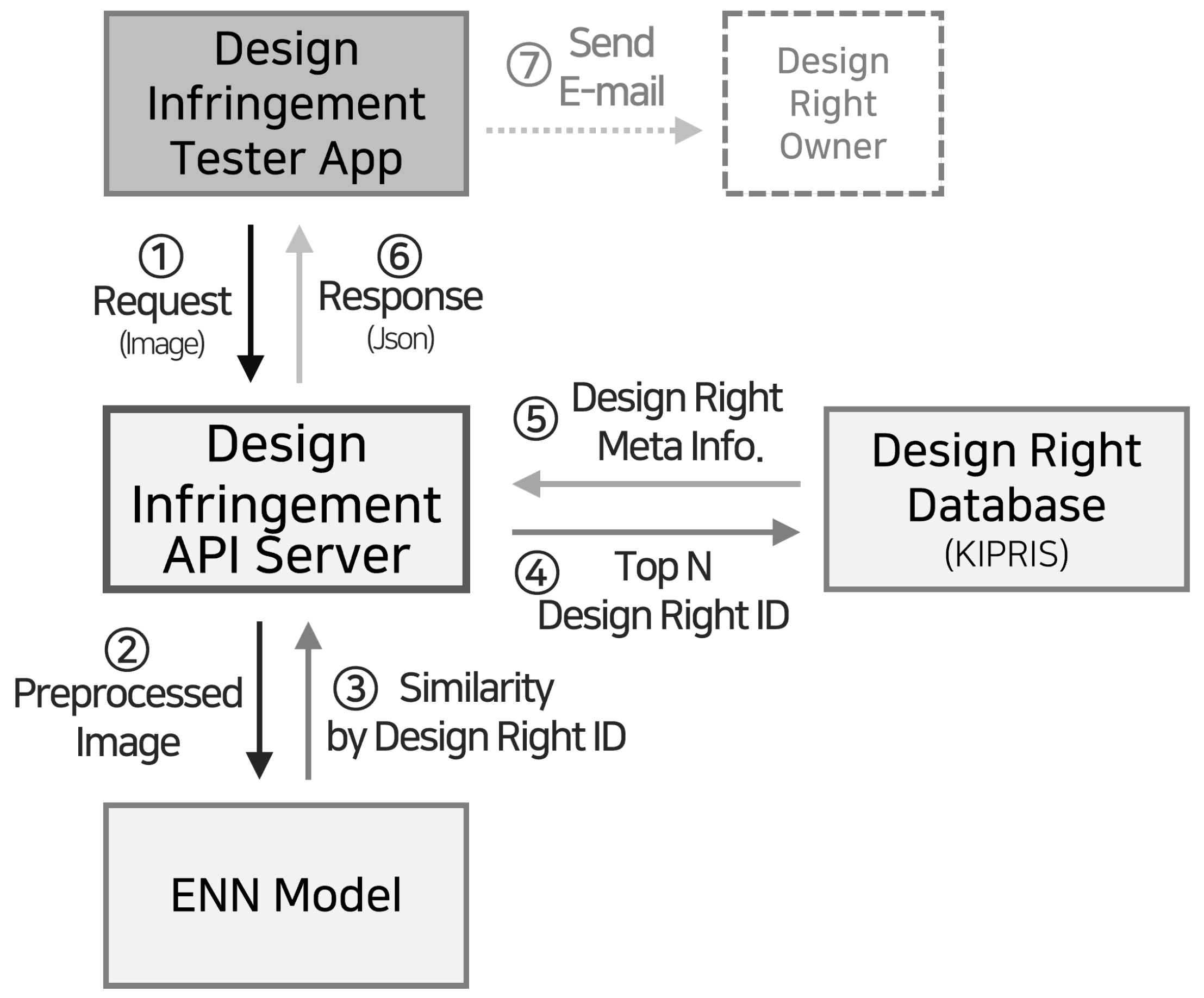
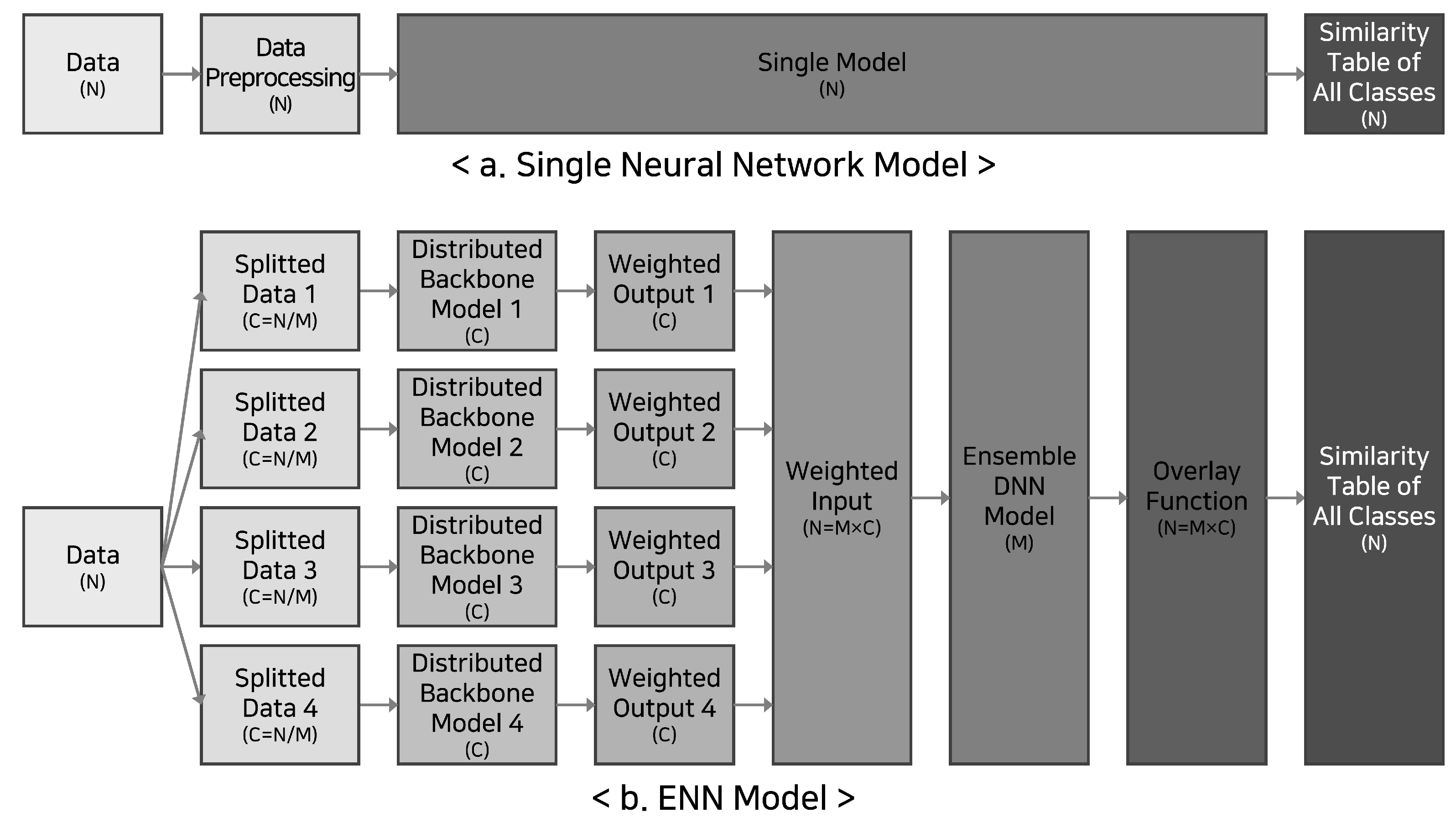
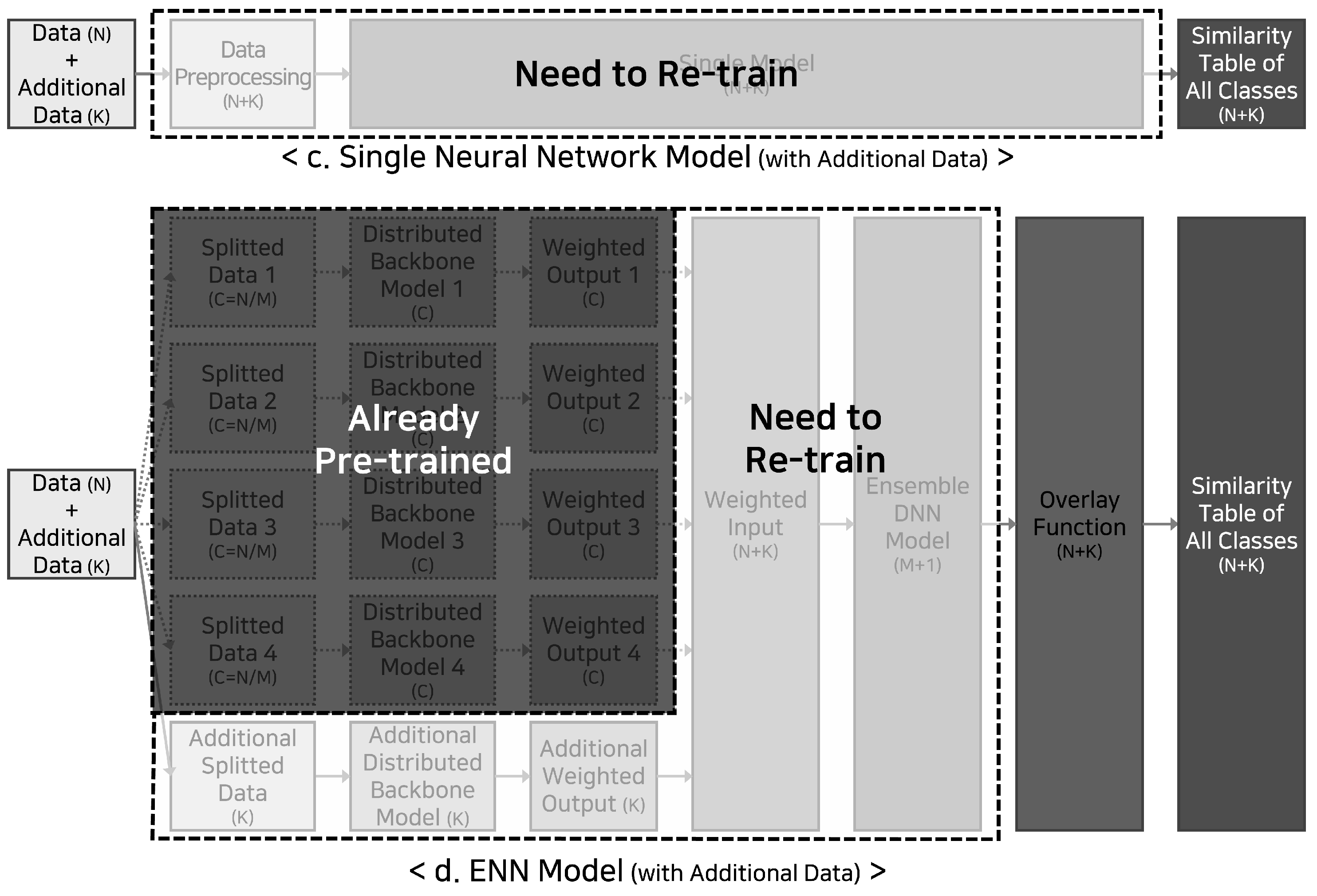


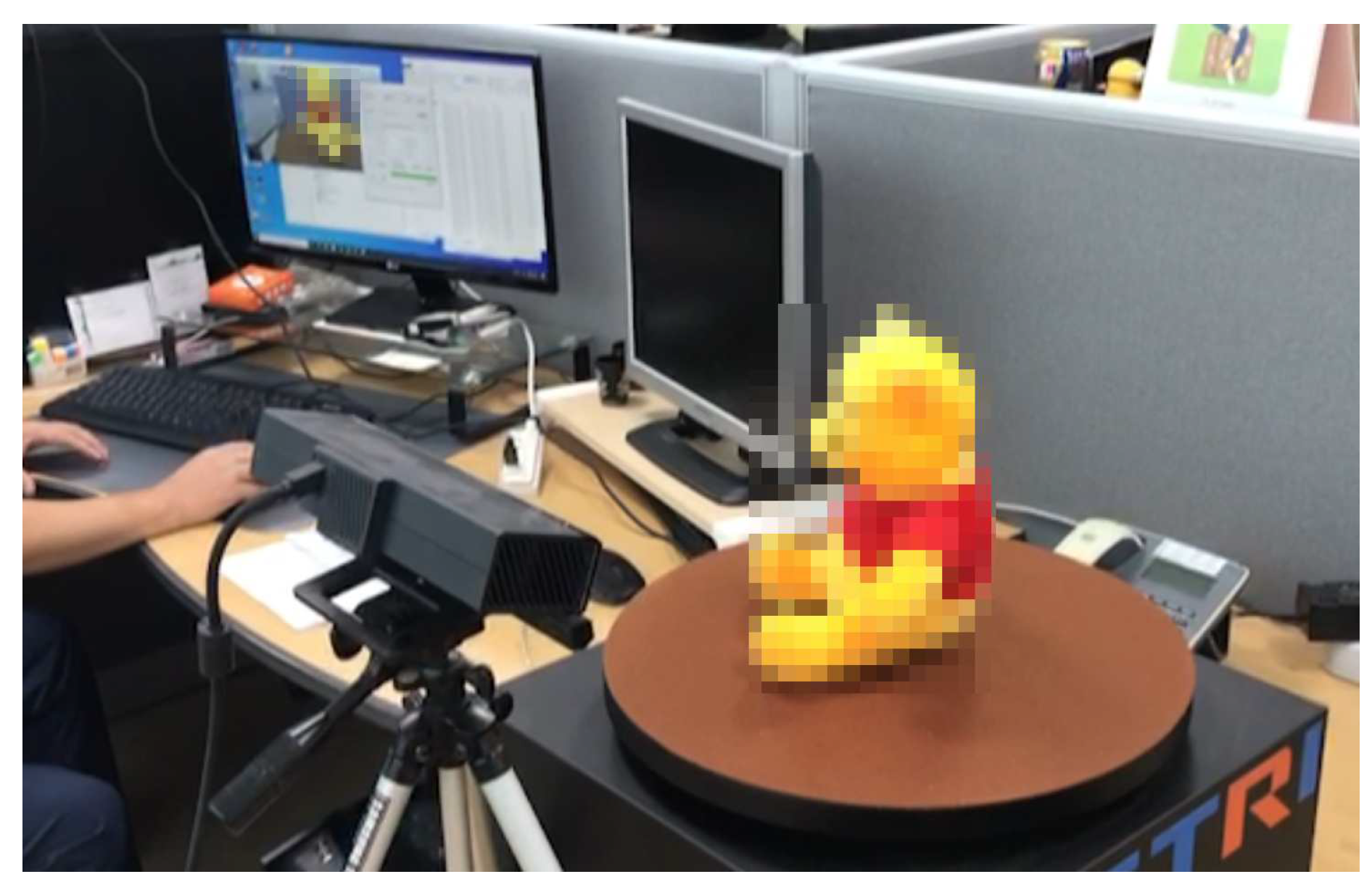

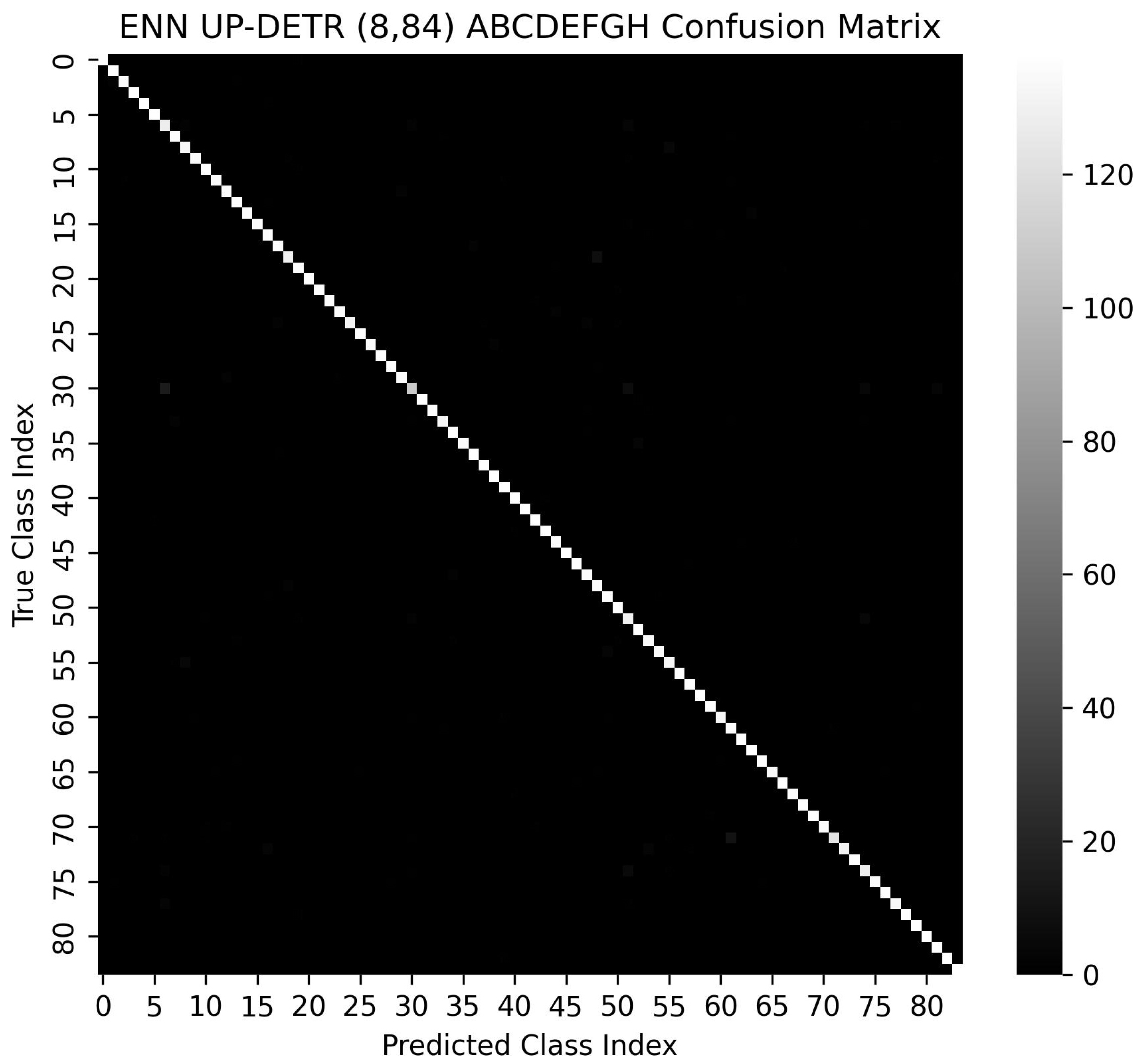
| Registration Number |
Product Type | International Classification |
Models Applied |
|---|---|---|---|
| 3008346600000 | Wireless Earphones | 14-03 | (1,11)A, (1,21)I, (1,42)M, (1,84)O |
| 3009240880000 | Earphones | 14-01 | (1,11)A, (1,21)I, (1,42)M, (1,84)O |
| 3011022290000 | Earphones | 14-03 | (1,11)A, (1,21)I, (1,42)M, (1,84)O |
| 3010963450000 | Smartwatch | 10-02 | (1,11)A, (1,21)I, (1,42)M, (1,84)O |
| 3009682050000 | Auxiliary Battery for Charging Electronic Devices | 13-02 | (1,11)A, (1,21)I, (1,42)M, (1,84)O |
| 3009953020000 | Charger for Electronic Devices | 13-02 | (1,11)A, (1,21)I, (1,42)M, (1,84)O |
| 3009911250000 | Nail Clippers | 28-03 | (1,11)A, (1,21)I, (1,42)M, (1,84)O |
| 3005785260000 | Nail Polishing File | 28-03 | (1,11)A, (1,21)I, (1,42)M, (1,84)O |
| 3009277950000 | Hairdressing Scissors | 28-03 | (1,11)A, (1,21)I, (1,42)M, (1,84)O |
| 3008580740000 | Toner Cartridge | 14-02 | (1,11)A, (1,21)I, (1,42)M, (1,84)O |
| 3010820300000 | Hair Styler | 28-03 | (1,11)A, (1,21)I, (1,42)M, (1,84)O |
| 3009462960000 | Nail Cleaning Tool Case | 03-01 | (1,10)B, (1,21)I, (1,42)M, (1,84)O |
| 3010448610000 | Skin Care Machine | 24-01 | (1,10)B, (1,21)I, (1,42)M, (1,84)O |
| 3009901080000 | Eyeliner Container | 28-02 | (1,10)B, (1,21)I, (1,42)M, (1,84)O |
| 3009727970000 | Hair Dryer | 28-03 | (1,10)B, (1,21)I, (1,42)M, (1,84)O |
| 3009201910000 | Lipstick | 28-02 | (1,10)B, (1,21)I, (1,42)M, (1,84)O |
| 3008635170000 | Hair Dryer | 28-03 | (1,10)B, (1,21)I, (1,42)M, (1,84)O |
| 3006924410000 | Front Bumper Cover for Car | 12-16 | (1,10)B, (1,21)I, (1,42)M, (1,84)O |
| 3005781700000 | Cartridge for Printer Developer | 14-02 | (1,10)B, (1,21)I, (1,42)M, (1,84)O |
| 3009950260000 | Nail Clippers | 28-03 | (1,10)B, (1,21)I, (1,42)M, (1,84)O |
| 3005904250000 | Packaging Container | 09-01 | (1,10)B, (1,21)I, (1,42)M, (1,84)O |
| 3007711150000 | Humidifier | 23-04 | (1,11)C, (1,21)J, (1,42)M, (1,84)O |
| 3008140280000 | Spray Container for Cosmetic Packaging | 09-01 | (1,11)C, (1,21)J, (1,42)M, (1,84)O |
| 3005222300000 | Cosmetic Containers | 09-01 | (1,11)C, (1,21)J, (1,42)M, (1,84)O |
| 3006924390000 | Car Radiator Grill | 12-16 | (1,11)C, (1,21)J, (1,42)M, (1,84)O |
| 3010336170000 | Fan | 23-04 | (1,11)C, (1,21)J, (1,42)M, (1,84)O |
| 3006037400000 | Hair Dryer | 28-03 | (1,11)C, (1,21)J, (1,42)M, (1,84)O |
| 3009746650000 | Spray Container for Packaging | 09-01 | (1,11)C, (1,21)J, (1,42)M, (1,84)O |
| 3010424520002 | Portable Vacuum Cleaner | 15-05 | (1,11)C, (1,21)J, (1,42)M, (1,84)O |
| 3009508860000 | Skin Care Machine | 28-03 | (1,11)C, (1,21)J, (1,42)M, (1,84)O |
| 3005872160000 | Nail Clippers | 28-03 | (1,11)C, (1,21)J, (1,42)M, (1,84)O |
| 3010277880000 | Portable Air Purifier | 23-04 | (1,11)C, (1,21)J, (1,42)M, (1,84)O |
| 3006394680000 | Front Fog Lamp for Car | 26-06 | (1,10)D, (1,21)J, (1,42)M, (1,84)O |
| 3010353420000 | Stylus Pen | 14-99 | (1,10)D, (1,21)J, (1,42)M, (1,84)O |
| 3008337320000 | Car Head Lamp | 26-06 | (1,10)D, (1,21)J, (1,42)M, (1,84)O |
| 3008337300000 | Automotive Rear Combination Lamp | 26-06 | (1,10)D, (1,21)J, (1,42)M, (1,84)O |
| 3008486220000 | Front Bumper Cover for Car | 12-16 | (1,10)D, (1,21)J, (1,42)M, (1,84)O |
| 3008486270000 | Car Radiator Grill | 12-16 | (1,10)D, (1,21)J, (1,42)M, (1,84)O |
| 3008433850000 | Car Wheel | 12-16 | (1,10)D, (1,21)J, (1,42)M, (1,84)O |
| 3009369070000 | Cell Phone Protection Case | 03-01 | (1,10)D, (1,21)J, (1,42)M, (1,84)O |
| 3009505900000 | Infant Head Protector | 02-99 | (1,10)D, (1,21)J, (1,42)M, (1,84)O |
| 3006471740000 | Heat Therapy Device | 24-01 | (1,10)D, (1,21)J, (1,42)M, (1,84)O |
| 3020200055040 | Wireless Earphones | 14-03 | (1,11)E, (1,21)K, (1,42)N, (1,84)O |
| 3008488090000 | Infant Head Protector | 02-99 | (1,11)E, (1,21)K, (1,42)N, (1,84)O |
| 3007512050000 | Animal Toys | 21-01 | (1,11)E, (1,21)K, (1,42)N, (1,84)O |
| 3007827830000 | Vacuum Cleaner | 15-05 | (1,11)E, (1,21)K, (1,42)N, (1,84)O |
| 3010328940000 | Hairdressing Scissors | 28-03 | (1,11)E, (1,21)K, (1,42)N, (1,84)O |
| 3006880340000 | Car Head Lamp | 26-06 | (1,11)E, (1,21)K, (1,42)N, (1,84)O |
| 3006314510000 | Developer for Printer | 14-02 | (1,11)E, (1,21)K, (1,42)N, (1,84)O |
| 3005792510000 | Hair Dryer | 28-03 | (1,11)E, (1,21)K, (1,42)N, (1,84)O |
| Registration Number |
Product Type | International Classification |
Models Applied |
|---|---|---|---|
| 3009137110000 | Robotic Vacuum | 15-05 | (1,11)E, (1,21)K, (1,42)N, (1,84)O |
| 3005633730000 | Nail Clippers | 28-03 | (1,11)E, (1,21)K, (1,42)N, (1,84)O |
| 3006880350000 | Automotive Rear Combination Lamp | 26-06 | (1,11)E, (1,21)K, (1,42)N, (1,84)O |
| 3007892610000 | Hair Dryer | 28-03 | (1,10)F, (1,21)K, (1,42)N, (1,84)O |
| 3004925580000 | Hair Dryer | 28-03 | (1,10)F, (1,21)K, (1,42)N, (1,84)O |
| 3009277940000 | Hairdressing Scissors | 28-03 | (1,10)F, (1,21)K, (1,42)N, (1,84)O |
| 3009664240000 | Infant Head Protector | 02-03 | (1,10)F, (1,21)K, (1,42)N, (1,84)O |
| 3010776320000 | Cheering Equipment | 21-03 | (1,10)F, (1,21)K, (1,42)N, (1,84)O |
| 3007488730000 | Nail Clippers | 28-03 | (1,10)F, (1,21)K, (1,42)N, (1,84)O |
| 3006812870000 | Doll | 21-01 | (1,10)F, (1,21)K, (1,42)N, (1,84)O |
| 3005777720000 | Electric Hair Straightener | 28-03 | (1,10)F, (1,21)K, (1,42)N, (1,84)O |
| 3008380770000 | General Beauty Scissors | 08-03 | (1,10)F, (1,21)K, (1,42)N, (1,84)O |
| 3006813180000 | Hair Brush | 04-02 | (1,10)F, (1,21)K, (1,42)N, (1,84)O |
| 3007298000000 | Electric Hair Straightener | 28-03 | (1,11)G, (1,21)L, (1,42)N, (1,84)O |
| 3009442540000 | Nail Clippers with Magnifying Glass Attached | 28-03 | (1,11)G, (1,21)L, (1,42)N, (1,84)O |
| 3010468310000 | Head Guard | 02-99 | (1,11)G, (1,21)L, (1,42)N, (1,84)O |
| 3007845090000 | Stationery Scissors | 08-03 | (1,11)G, (1,21)L, (1,42)N, (1,84)O |
| 3006955750000 | Doll | 21-01 | (1,11)G, (1,21)L, (1,42)N, (1,84)O |
| 3008976800000 | Cheering Tool | 21-03 | (1,11)G, (1,21)L, (1,42)N, (1,84)O |
| 3009317560000 | Doll | 21-01 | (1,11)G, (1,21)L, (1,42)N, (1,84)O |
| 3011212930000 | Cheering Tool | 21-03 | (1,11)G, (1,21)L, (1,42)N, (1,84)O |
| 3008380780000 | Beauty Thinning Scissors | 08-03 | (1,11)G, (1,21)L, (1,42)N, (1,84)O |
| 3009052330000 | Hair Dryer | 28-03 | (1,11)G, (1,21)L, (1,42)N, (1,84)O |
| 3011182010000 | Infant Head Protection | 02-03 | (1,11)G, (1,21)L, (1,42)N, (1,84)O |
| 3005633760000 | Nail Clippers | 28-03 | (1,10)H, (1,21)L, (1,42)N, (1,84)O |
| 3010696720000 | Cheering Equipment | 21-03 | (1,10)H, (1,21)L, (1,42)N, (1,84)O |
| 3007449670000 | Hair Brush | 04-02 | (1,10)H, (1,21)L, (1,42)N, (1,84)O |
| 3010123750000 | Nail Clippers | 28-03 | (1,10)H, (1,21)L, (1,42)N, (1,84)O |
| 3011236760000 | Cheering Light Stick | 21-03 | (1,10)H, (1,21)L, (1,42)N, (1,84)O |
| 3009505920000 | Infant Head Protector | 02-99 | (1,10)H, (1,21)L, (1,42)N, (1,84)O |
| 3005480740000 | Hand Puppet | 21-01 | (1,10)H, (1,21)L, (1,42)N, (1,84)O |
| 3011211790000 | Cheering Tool | 21-03 | (1,10)H, (1,21)L, (1,42)N, (1,84)O |
| 3008039980000 | Hair Styler | 28-03 | (1,10)H, (1,21)L, (1,42)N, (1,84)O |
| 3007797260000 | Cheering Glow Stick | 21-03 | (1,10)H, (1,21)L, (1,42)N, (1,84)O |
| Num of Design Rights | 10 | 11 | 14 | 21 | 42 | 84 |
|---|---|---|---|---|---|---|
|
Average Train Time per Epoch () |
3.0 | 3.5 | 4.5 | 6.75 | 15.25 | 29.5 |
| Model | UP-DETR | Yolo | EfficientNet | ResNet | WideResNet | |||||
|---|---|---|---|---|---|---|---|---|---|---|
| Top-1 | Top-3 | Top-1 | Top-3 | Top-1 | Top-3 | Top-1 | Top-3 | Top-1 | Top-3 | |
| (1,11) A | 99.868 | 100.000 | 96.443 | 97.958 | 99.868 | 100.000 | 99.671 | 100.000 | 98.090 | 99.868 |
| (1,10) B | 100.000 | 100.000 | 95.072 | 97.681 | 99.710 | 100.000 | 99.783 | 100.000 | 99.348 | 100.000 |
| (1,11) C | 99.934 | 100.000 | 93.478 | 97.826 | 99.802 | 100.000 | 99.407 | 100.000 | 99.275 | 100.000 |
| (1,10) D | 100.000 | 100.000 | 90.290 | 96.232 | 99.783 | 100.000 | 98.333 | 99.855 | 99.565 | 99.855 |
| (1,11) E | 100.000 | 100.000 | 94.137 | 97.167 | 99.473 | 100.000 | 99.605 | 100.000 | 98.353 | 99.934 |
| (1,10) F | 99.928 | 100.000 | 95.000 | 98.333 | 99.855 | 100.000 | 99.203 | 100.000 | 97.754 | 100.000 |
| (1,11) G | 99.868 | 100.000 | 96.509 | 99.012 | 100.000 | 100.000 | 99.868 | 100.000 | 99.539 | 100.000 |
| (1,10) H | 100.000 | 100.000 | 96.957 | 98.043 | 99.783 | 100.000 | 98.551 | 100.000 | 97.826 | 100.000 |
| (1,21) I | 99.896 | 100.000 | 96.653 | 97.964 | 99.862 | 100.000 | 99.517 | 99.965 | 99.517 | 99.931 |
| (1,21) J | 100.000 | 100.000 | 97.861 | 98.896 | 99.896 | 100.000 | 99.551 | 100.000 | 99.655 | 99.965 |
| (1,21) K | 99.965 | 100.000 | 96.308 | 98.689 | 99.931 | 100.000 | 99.068 | 100.000 | 99.482 | 99.965 |
| (1,21) L | 100.000 | 100.000 | 98.344 | 99.413 | 99.655 | 100.000 | 99.310 | 100.000 | 98.965 | 100.000 |
| (1,42) M | 99.879 | 100.000 | 97.981 | 98.689 | 99.948 | 100.000 | 99.586 | 100.000 | 99.620 | 100.000 |
| (1,42) N | 99.845 | 100.000 | 96.411 | 99.051 | 99.931 | 100.000 | 99.396 | 99.983 | 99.396 | 99.983 |
| (1,84) O [Single] | 99.784 | 99.957 | 90.709 | 96.299 | 99.905 | 100.000 | 99.569 | 99.983 | 99.681 | 99.983 |
| Model | 2048 | 1024 | 512 | 256 | ||||
|---|---|---|---|---|---|---|---|---|
| Top-1 | Top-3 | Top-1 | Top-3 | Top-1 | Top-3 | Top-1 | Top-3 | |
| (2,21) AB | 98.861 | 99.827 | 98.930 | 99.966 | 98.689 | 99.827 | 98.930 | 99.827 |
| (3,32) ABC | 98.483 | 99.502 | 98.256 | 99.592 | 98.120 | 99.457 | 98.211 | 99.389 |
| (4,42) ABCD | 98.585 | 99.500 | 98.344 | 99.362 | 98.568 | 99.431 | 98.413 | 99.465 |
| (5,53) ABCDE | 97.963 | 99.330 | 98.154 | 99.289 | 98.031 | 99.180 | 97.744 | 99.180 |
| (6,63) ABCDEF | 98.068 | 99.160 | 98.321 | 99.149 | 98.033 | 99.103 | 98.137 | 99.275 |
| (7,74) ABCDEFG | 98.051 | 99.158 | 98.296 | 99.315 | 98.267 | 99.119 | 98.228 | 99.128 |
| (8,84) ABCDEFGH | 98.361 | 99.163 | 98.318 | 99.198 | 98.137 | 99.129 | 98.102 | 99.180 |
| Average | 98.339 | 99.377 | 98.374 | 99.410 | 98.264 | 99.321 | 98.252 | 99.349 |
| Model | 0.1 | 0.2 | 0.3 | 0.4 | 0.5 | |||||
|---|---|---|---|---|---|---|---|---|---|---|
| Top-1 | Top-3 | Top-1 | Top-3 | Top-1 | Top-3 | Top-1 | Top-3 | Top-1 | Top-3 | |
| (2,21) AB | 98.965 | 99.896 | 98.930 | 99.966 | 98.723 | 99.827 | 98.999 | 99.896 | 98.965 | 99.793 |
| (3,32) ABC | 98.188 | 99.547 | 98.256 | 99.592 | 98.279 | 99.547 | 98.392 | 99.660 | 98.256 | 99.479 |
| (4,42) ABCD | 98.551 | 99.517 | 98.344 | 99.362 | 98.620 | 99.517 | 98.447 | 99.500 | 98.326 | 99.413 |
| (5,53) ABCDE | 97.935 | 99.221 | 98.154 | 99.289 | 97.935 | 99.262 | 98.113 | 99.439 | 98.195 | 99.330 |
| (6,63) ABCDEF | 98.068 | 99.034 | 98.321 | 99.149 | 97.930 | 99.045 | 98.263 | 99.218 | 98.091 | 99.114 |
| (7,74) ABCDEFG | 98.237 | 99.285 | 98.296 | 99.315 | 98.208 | 99.138 | 98.374 | 99.256 | 98.159 | 99.138 |
| (8,84) ABCDEFGH | 98.206 | 99.111 | 98.318 | 99.198 | 98.456 | 99.172 | 98.275 | 99.249 | 98.068 | 99.189 |
| Average | 98.307 | 99.373 | 98.374 | 99.410 | 98.307 | 99.358 | 98.409 | 99.460 | 98.294 | 99.351 |
| Model | 0.05 | 0.01 | 0.005 | 0.001 | ||||
|---|---|---|---|---|---|---|---|---|
| Top-1 | Top-3 | Top-1 | Top-3 | Top-1 | Top-3 | Top-1 | Top-3 | |
| (2,21) AB | 98.689 | 99.827 | 98.689 | 99.793 | 98.999 | 99.896 | 98.758 | 99.827 |
| (3,32) ABC | 97.917 | 99.774 | 97.962 | 99.592 | 98.392 | 99.660 | 98.053 | 99.457 |
| (4,42) ABCD | 97.912 | 99.465 | 98.378 | 99.569 | 98.447 | 99.500 | 98.223 | 99.362 |
| (5,53) ABCDE | 96.874 | 98.742 | 97.635 | 99.166 | 98.113 | 99.439 | 97.949 | 99.262 |
| (6,63) ABCDEF | 97.239 | 99.275 | 98.022 | 99.137 | 98.263 | 99.218 | 98.079 | 99.160 |
| (7,74) ABCDEFG | 97.131 | 99.158 | 98.149 | 99.266 | 98.374 | 99.256 | 98.306 | 99.275 |
| (8,84) ABCDEFGH | 97.041 | 99.120 | 98.223 | 99.224 | 98.275 | 99.249 | 98.352 | 99.180 |
| Average | 97.543 | 99.337 | 98.151 | 99.392 | 98.409 | 99.460 | 98.246 | 99.360 |
| Model | AdamW | Adam | SGD | RMSprop | ||||
|---|---|---|---|---|---|---|---|---|
| Top-1 | Top-3 | Top-1 | Top-3 | Top-1 | Top-3 | Top-1 | Top-3 | |
| (2,21) AB | 98.999 | 99.896 | 98.792 | 99.896 | 98.413 | 99.758 | 95.169 | 99.965 |
| (3,32) ABC | 98.392 | 99.660 | 98.324 | 99.615 | 97.962 | 99.706 | 92.278 | 99.841 |
| (4,42) ABCD | 98.447 | 99.500 | 98.671 | 99.465 | 98.447 | 99.655 | 85.059 | 99.638 |
| (5,53) ABCDE | 98.113 | 99.439 | 98.141 | 99.330 | 97.676 | 99.398 | 80.476 | 99.316 |
| (6,63) ABCDEF | 98.263 | 99.218 | 98.091 | 99.137 | 97.930 | 99.275 | 76.398 | 98.884 |
| (7,74) ABCDEFG | 98.374 | 99.256 | 98.365 | 99.138 | 98.188 | 99.226 | 72.111 | 98.570 |
| (8,84) ABCDEFGH | 98.275 | 99.249 | 98.378 | 99.146 | 98.240 | 99.180 | 69.117 | 97.559 |
| Average | 98.409 | 99.460 | 98.395 | 99.390 | 98.122 | 99.457 | 81.515 | 99.111 |
| Model | 4 | 5 | 6 | 7 | 8 | |||||
|---|---|---|---|---|---|---|---|---|---|---|
| Top-1 | Top-3 | Top-1 | Top-3 | Top-1 | Top-3 | Top-1 | Top-3 | Top-1 | Top-3 | |
| (2,21) AB | 98.930 | 99.896 | 99.034 | 99.862 | 98.999 | 99.896 | 98.896 | 99.655 | 98.896 | 99.827 |
| (3,32) ABC | 98.370 | 99.502 | 98.370 | 99.592 | 98.392 | 99.660 | 98.211 | 99.298 | 98.211 | 99.434 |
| (4,42) ABCD | 98.447 | 99.551 | 98.568 | 99.500 | 98.447 | 99.500 | 98.464 | 99.603 | 98.413 | 99.482 |
| (5,53) ABCDE | 98.059 | 99.385 | 98.045 | 99.371 | 98.113 | 99.439 | 97.799 | 99.330 | 98.195 | 99.412 |
| (6,63) ABCDEF | 98.447 | 99.195 | 98.114 | 99.126 | 98.263 | 99.218 | 98.022 | 99.195 | 98.298 | 99.264 |
| (7,74) ABCDEFG | 97.993 | 99.128 | 98.159 | 99.266 | 98.374 | 99.256 | 98.208 | 99.187 | 98.296 | 99.226 |
| (8,84) ABCDEFGH | 98.240 | 99.258 | 98.223 | 99.198 | 98.275 | 99.249 | 98.275 | 99.224 | 98.413 | 99.224 |
| Average | 98.355 | 99.417 | 98.359 | 99.416 | 98.409 | 99.460 | 98.268 | 99.356 | 98.389 | 99.410 |
| Model | UP-DETR | Yolo | EfficientNet | ResNet | WideResNet | |||||
|---|---|---|---|---|---|---|---|---|---|---|
| Top-1 | Top-3 | Top-1 | Top-3 | Top-1 | Top-3 | Top-1 | Top-3 | Top-1 | Top-3 | |
| (2,21) AB | 98.930 | 99.896 | 90.683 | 96.756 | 96.687 | 99.965 | 96.515 | 99.965 | 94.237 | 99.482 |
| (3,32) ABC | 98.370 | 99.502 | 87.228 | 95.267 | 96.445 | 99.728 | 95.245 | 99.343 | 93.524 | 98.777 |
| (4,42) ABCD | 98.447 | 99.551 | 84.972 | 93.099 | 96.377 | 99.551 | 94.910 | 98.982 | 93.841 | 98.602 |
| (5,53) ABCDE | 98.059 | 99.385 | 83.443 | 92.508 | 94.750 | 99.152 | 94.217 | 98.728 | 92.931 | 98.496 |
| (6,63) ABCDEF | 98.447 | 99.195 | 83.506 | 91.534 | 95.480 | 98.930 | 94.134 | 98.401 | 93.214 | 98.217 |
| (7,74) ABCDEFG | 97.993 | 99.128 | 83.500 | 91.324 | 95.554 | 98.796 | 94.036 | 98.110 | 93.400 | 97.983 |
| (8,84) ABCDEFGH | 98.275 | 99.249 | 83.791 | 91.442 | 95.980 | 98.896 | 94.229 | 98.137 | 93.599 | 97.800 |
| (4,84) IJKL | 98.878 | 99.672 | 88.708 | 96.368 | 95.385 | 99.603 | 95.057 | 99.094 | 93.703 | 98.913 |
| (2,84) MN | 98.404 | 99.189 | 93.444 | 98.490 | 96.946 | 99.965 | 96.912 | 99.784 | 96.006 | 99.862 |
| (1,84) O | 99.784 | 99.957 | 90.709 | 96.299 | 99.905 | 100.000 | 99.569 | 99.983 | 99.681 | 99.983 |
| Model | Precision | Recall | F1 Score |
|---|---|---|---|
| UP-DETR | 98.309 | 98.275 | 98.271 |
| Yolo | 84.267 | 83.791 | 83.718 |
| EfficientNet | 96.019 | 95.980 | 95.961 |
| ResNet | 94.284 | 94.229 | 94.212 |
| WideResNet | 93.690 | 93.599 | 93.593 |
Short Biography of Authors
 |
Chan Jae Lee received a bachelor’s degree in urban engineering from Hongik University in 2019 and a master’s degree in Artificial Intelligence and Big Data in the Industrial Convergence Interdepartmental Program in 2021. From 2021, he has been an Artificial Intelligence Researcher in the Future Technology Strategy Lab of NetcoreTech. His research interests include Machine Learning, Deep Learning, Big Data, Computer Vision, Large Graph, and Smart City. |
 |
Seong Ho Jeong received a bachelor’s degree in Mathematics from Incheon National University in 2021. From 2021, he has been an Artificial Intelligence Researcher in the Future Technology Strategy Lab of NetcoreTech. His research interests include Machine Learning, Deep Learning, Big Data, and Computer Vision. |
 |
Young Yoon received a bachelor’s degree and master’s degree in Computer Sciences from the University of Texas at Austin in 2003 and 2006, respectively. He also earned his doctoral’s degree in Computer Engineering from University of Toronto in 2013. From 2015, he has been an assistant professor in the Department of Computer Science at Hongik University. His research interests include distributed computing, middleware, and applied artificial intelligence. |
Disclaimer/Publisher’s Note: The statements, opinions and data contained in all publications are solely those of the individual author(s) and contributor(s) and not of MDPI and/or the editor(s). MDPI and/or the editor(s) disclaim responsibility for any injury to people or property resulting from any ideas, methods, instructions or products referred to in the content. |
© 2023 by the authors. Licensee MDPI, Basel, Switzerland. This article is an open access article distributed under the terms and conditions of the Creative Commons Attribution (CC BY) license (http://creativecommons.org/licenses/by/4.0/).





